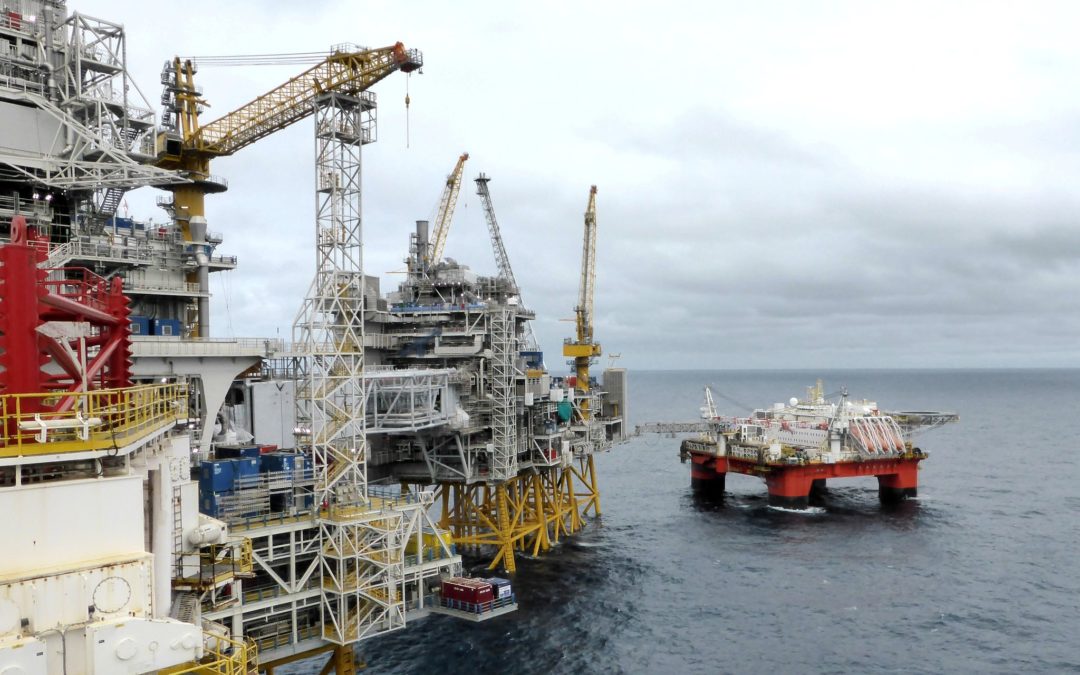SOURCE: New York Times
DATE: November 3, 2019
SNIP: A surge of oil production is coming, whether the world needs it or not.
The flood of crude will arrive even as concerns about climate change are growing and worldwide oil demand is slowing. And it is not coming from the usual producers, but from Brazil, Canada, Norway and Guyana — countries that are either not known for oil or whose production has been lackluster in recent years.
This looming new supply may be a key reason Saudi Arabia’s giant oil producer, Aramco, pushed ahead on Sunday with plans for what could be the world’s largest initial stock offering ever.
Together, the four countries stand to add nearly a million barrels a day to the market in 2020 and nearly a million more in 2021, on top of the current world crude output of 80 million barrels a day. That boost in production, along with global efforts to lower emissions, will almost certainly push oil prices down.
Lower prices could prove damaging for Aramco and many other oil companies, reducing profits and limiting new exploration and drilling, while also reshaping the politics of the nations that rely on oil income.
The new rise in production is likely to bring economic relief to consumers at the gas pump and to importing nations like China, India and Japan. But cheaper oil may complicate efforts to combat global warming and wean consumers and industries off their dependence on fossil fuels, because lower gasoline prices could, for example, slow the adoption of electric vehicles.

Years of moderate gasoline prices have already increased the popularity of bigger cars and sports utility vehicles in the United States, and the probability of more oil on the market is bound to weigh on prices at the pump over the next few years.
The oil-supply outlook is a sharp departure from the early 2000s, when prices soared as producers strained to keep up with ballooning demand in China and some analysts warned that the world was running out of oil.
Then came the rise of hydraulic fracturing and drilling through tight shale fields, which converted the United States from a needy importer into a powerful exporter. The increase in American production, along with a choppy global economy, shaved oil prices from well over $100 a barrel before the 2007-9 recession to about $56 on Friday for the American benchmark crude.
Like the shale boom, the coming supply surge is a sudden change in dynamics. Guyana currently produces no oil at all. Norwegian and Brazilian production has long been in decline. And in Canada, concerns about climate change, resistance to new pipelines and high production costs have curtailed investments in oil-sands fields for five consecutive years.
Production of more oil comes at a time when there is growing acknowledgment by governments and energy investors that not all the hydrocarbons in the ground can be tapped if climate change is to be controlled. But exploration decisions, made years ago, have a momentum that can be hard to stop.
“Legacy decisions keep going,” said John Browne, BP’s former chief executive. “Things happen in different directions because decisions are made at different times.”
The added production in Norway comes despite the country’s embrace of the 2016 Paris climate agreement, which committed nations to cut greenhouse-gas emissions. Its sovereign wealth fund has cut investments in some oil companies, and its national oil company, Equinor, has pledged to increase its investments in wind power.
Equinor, which recently changed its name from Statoil to emphasize its partial pivot to renewable energy, nevertheless defends the new field on its company website, asserting, “The Paris Agreement is quite clear that there will still be a need for oil.”
In Brazil, after years of scandal and delays, new offshore production platforms are coming online. Production has climbed over the last year by 300,000 barrels a day, and the country is expected to add as much as 460,000 more barrels a day by the end of 2021. In the coming days, Brazil is scheduled to hold a major auction in which some of the largest oil companies will bid for drilling rights in offshore areas with as much as 15 billion barrels of reserves.
In Canada, the 1,000-mile Line 3 pipeline that will take oil from the Alberta fields to Wisconsin, is near completion and awaiting final permitting. Energy experts say that could increase Canadian production by a half million barrels a day, or about 10 percent.
And the most striking change will be in Guyana, a tiny South American country where Exxon Mobil has made a string of major discoveries over the last four years. Production will reach 120,000 barrels a day early next year, rising to at least 750,000 barrels by 2025, and more is expected after that.
At the same time, new pipelines in Texas are expected to increase United States exports to 3.3 million barrels a day next year, from the current 2.8 million.

